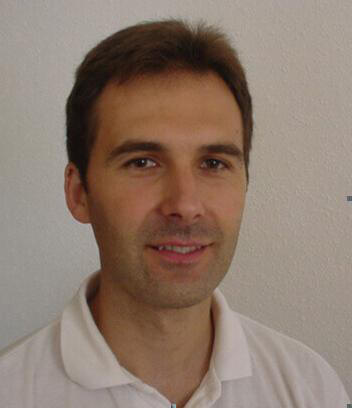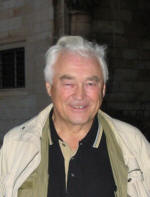Emerging Internet Quality of Service (QoS) mechanisms are expected to enable wide spread use of real time services such as VoIP and videoconferencing. The "best effort" Internet delivery cannot be used for the new multimedia applications. New technologies and new standards are necessary to offer Quality of Service (QoS) for these multimedia applications. Therefore new communication architectures integrate mechanisms allowing guaranteed QoS services as well as high rate communications. The service level agreement with a mobile Internet user is hard to satisfy, since there may not be enough resources available in some parts of the network the mobile user is moving into. The emerging Internet QoS architectures, differentiated services and integrated services, do not consider user mobility. QoS mechanisms enforce a differentiated sharing of bandwidth among services and users. Thus, there must be mechanisms available to identify traffic flows with different QoS parameters, and to make it possible to charge the users based on requested quality. The integration of fixed and mobile wireless access into IP networks presents a cost effective and efficient way to provide seamless end-to-end connectivity and ubiquitous access in a market where the demand for mobile Internet services has grown rapidly and predicted to generate billions of dollars in revenue. This tutorial covers to the issues of QoS provisioning in heterogeneous networks and Internet access over future wireless networks as well as ATM, MPLS, DiffServ, IntServ frameworks. It discusses the characteristics of the Internet, mobility and QoS provisioning in wireless and mobile IP networks. This tutorial also covers routing, security, baseline architecture of the inter-networking protocols and end to end traffic management issues.
 |
Pascal Lorenz (lorenz@ieee.org) received his M.Sc. (1990) and Ph.D. (1994) from the University of Nancy, France. Between 1990 and 1995 he was a research engineer at WorldFIP Europe and at Alcatel-Alsthom. He is a professor at the University of Haute-Alsace, France, since 1995. His research interests include QoS, wireless networks and high-speed networks .He is the author/co-author of 3 books, 2 patents and 200 international publications in refereed journals and conferences. He was Technical Editor of the IEEE Communications Magazine Editorial Board (2000- |
2006), Chair of Vertical Issues in Communication Systems Technical Committee Cluster (2008-2009) and Modeling Technical Committee (2003-2009) and Chair of the Communications Software Technical Committee (2008-2010). He has been Co-Program Chair of ICC'04 and symposium Co-Chair at Globecom 2009-2007 and ICC 2009-2008. He has served as Co-Guest Editor for special issues of IEEE Communications Magazine, Networks Magazine, Wireless Communications Magazine, Telecommunications Systems and LNCS. He is senior member of the IEEE and member of many international program committees. He has organized many conferences, chaired several technical sessions and gave tutorials at major international conferences. |
|
A life without pain and suffering and much longer, with superhuman mental and physical capabilities: throughout human existence this seems to have been the dream of many people. Transhumanism is pursuing these objectives, but on a seemingly more serious base as an intellectual and cultural movement with the objective of enhancement of human beings, i.e. augmenting human capabilities and reducing human shortcomings. The new focus is on the use of science and technology – and philosophy? - to enhance mental and physical abilities and aptitudes, and to overcome negative aspects of the human condition such as aging, diseases, suffering, disability and death. The scope ranges from the individual to the whole species, e.g. it includes medicine as well as eugenics. Its approach is “transdisciplinarian” combining mainly the fields of genetics, robotics, informatics and neuroscience (acronym GRIN). Emerging technologies such as nanotechnology, biotechnology, information technology, and cognitive science (NBIC) are seen to converge. Hypothetical future technologies are expected to arise, such as simulated reality, superintelligence, mind uploading and cryonics. There are obvious interactions with science fiction. The movement also addresses a growing body of criticism discussing potential dangers and benefits. Criticism comes from many directions: philosophy, ethics, sociology, theology.
The talk will briefly outline the history and evolving definitions, then focus on areas related to engineering disciplines. What progress has been made in recent years, if at all? As computer scientists and technologists we will be asked to play a role in these efforts. Whether we participate or not, it behooves us well to reflect about the potential consequences.
 |
Dr. Gottfried W. R. Luderer was appointed Professor, ISS Chair of Telecommunication, at Arizona State University in the Fall of 1990. His current research program in networking includes work in the areas of control of ISDN/Broadband ISDN networks, mobile communication networks, and multimedia communication, which ranges from call processing for intelligent network services to network management. Research emphasis is on advanced software technologies for development of telecommunication networks, as used in switches, for signaling and in network management, with a focus on object and component technology and formal definition techniques. From 1965 to 1989, |
| Dr. Luderer was with AT&T Bell Labs, at last directing research on next generation switch architectures, based on fast packet switching technology on the hardware side and object-oriented design technology on the software side, resulting in some of the earliest demonstration networks for multimedia communication. Dr. Luderer holds Diplomingenieur (M.S) and Dr.-Ing. (Ph.D) degrees in Electrical Engineering from the Technical University of Braunschweig, Germany. He holds two patents. While at Bell Labs, he taught at Stevens Institute of Technology in Hoboken, NJ, and at Princeton University. He is member of ACM, IEEE, IEEE Computer and Communication Societies. | |
The tutorial starts with some general aspects of computational EMC. The introduction will also outline some commonly used analytical and numerical methods, respectively. The participants will then be introduced to the theory of wire antennas and related numerical solution methods for the integral equations in both frequency and time domain. Applications related to dipole antennas, Yagi-Uda arrays and logarithmic-periodic dipole antennas (LPDA) will be covered. Furthermore, full wave models for various thin wire configurations, from rather simple to realistic complex geometries, will be presented. This will be followed by the analysis of overhead and buried wires, respectively, which will be undertaken using rigorous full wave models and approximate transmission line approach. Particular attention will be focused to the analysis of PLC (Power Line Communications) configurations. Then, the transient analysis of realistic grounding systems with emphasis to wind turbines will be carried out. The tutorial ends up with human exposure to non-ionizing electromagnetic fields. Low and high frequency exposures will be discussed.
|
|
Dragan Poljak was born on 10 October 1965. He received his BSc in 1990, his MSc in 1994 and PhD in electrical engineering in 1996 from the University of Split, Croatia. He is the Full Professor at the Department of Electronics at the University of Split, and he is also Adjunct Professor at Wessex Institute of Technology. His research interests include frequency and time domain computational methods in electromagnetics, particularly in the numerical modelling of wire antenna structures, and numerical modelling applied to environmental aspects of electromagnetic fields. To date Professor Poljak has published nearly 200 journal |
| and conference papers in the area of computational electromagnetics, seven authored books and one edited book, by WIT Press, Southampton-Boston., and one book by Wiley, New Jersey. Professor Poljak is a member of IEEE, a member of the Editorial Board of the journal Engineering Analysis with Boundary Elements, and co-chairman of many WIT International Conferences. He is also editor of the WIT Press Series Advances in Electrical Engineering and Electromagnetics. In 2011 professor Poljak became a member of WIT Bord of Directors. In June 2004 professor Poljak was awarded by the National Prize for Science. | |



